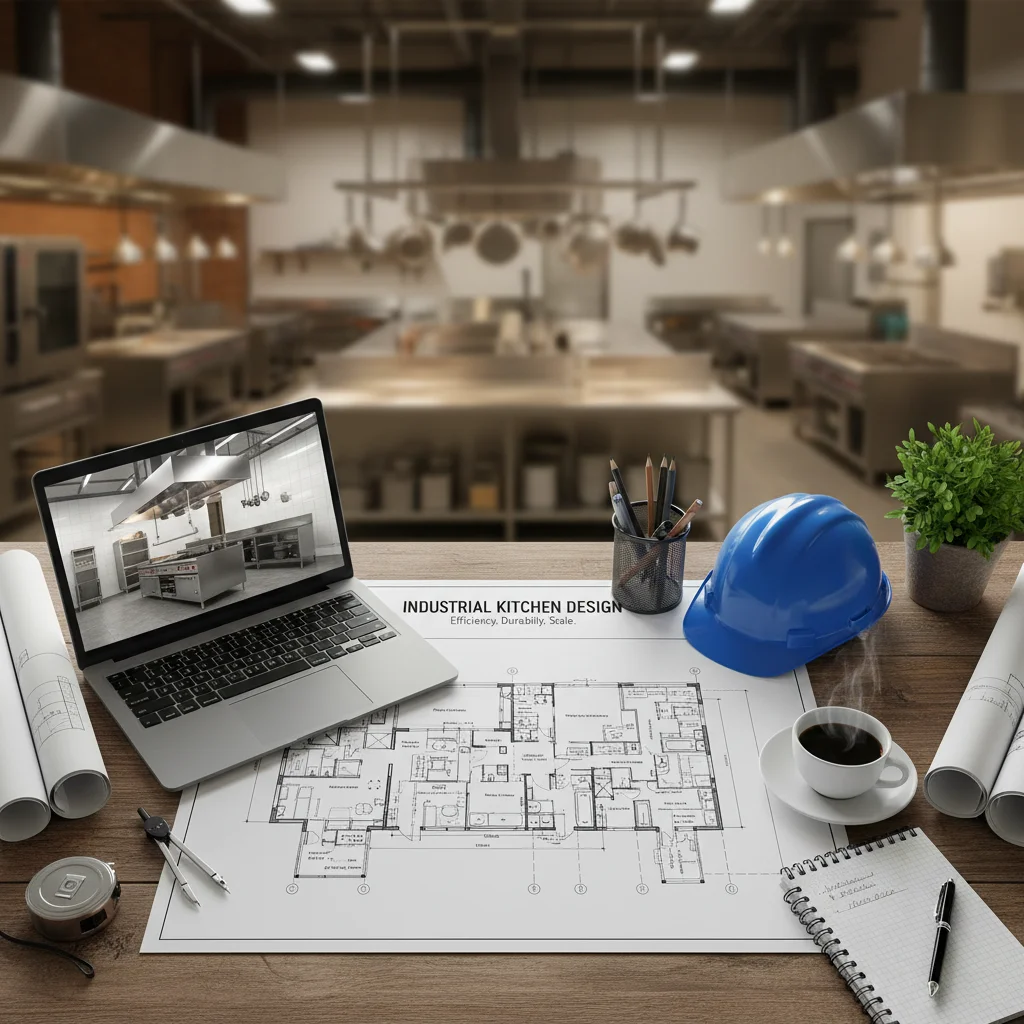Kitchen & Layout Planning
Purpose:
To help founders design kitchens and floor plans that actually work - spaces where food flows, people don't collide, and inspectors leave smiling
Our goal:
A back-of-house that hums like a good blues band and a front-of-house that feels effortless to your guests.

1. Core Principles
A well-designed restaurant runs on invisible choreography.
- Flow: ingredients move in one direction — from receiving → storage → prep → cooking → service → dish. Anything else is chaos wearing an apron.
- Zones: clear lines keep the soup out of the salad and the staff out of each other’s way.
- Compliance: design for health, fire, and building codes — they’re not suggestions.
- Scalability: plan for today, but leave room for tomorrow’s lunch rush.
2. Kitchen Zones
- Receiving & Storage: dry, cold, and freezer storage — labeled, organized, judgment-free.
- Prep Area: chopping, mixing, portioning. Close to storage, far from chaos.
- Cooking Line: your hot line — grill, fry, range, oven — all under good ventilation and better discipline.
- Service Pass: plating, heat lamps, and that final handoff between “chef” and “showtime.”
- Dishwashing: dirty in → wash → sanitize → clean out. Like confession, but wetter.
- Staff Area: lockers, restrooms, and a corner to breathe — or question life choices mid-rush.
3. Equipment Planning
Your tools shape your tempo.
- Match equipment to menu volume — buy for your busiest day, not your best hope.
- Keep spacing and ergonomics sane — elbows and hot oil should never meet.
- Plan ventilation and gas lines early — moving them later costs more than your fryer.
- Future-proof: leave hookups and space for upgrades; success needs room to grow.
4. Front-of-House Integration
The front and back should feel like one team, not divorced roommates.
- Keep service stations near the pass.
- Design clear circulation paths for both staff and guests.
- Make the entry experience match your brand — the first impression starts before the first bite.
5. Compliance & Safety
You can’t serve great food if the inspector shuts you down.
- Health codes: hand sinks, mop sinks, and no romantic mingling between raw and cooked zones.
- ADA accessibility: everyone should be able to enjoy your space.
- Fire suppression & ventilation: the hood is not a decoration.
- Waste disposal: keep the exits clean, both literally and legally.
6. Testing & Simulation
Before you build, walk the dance.
- Dry run: trace the steps of your cooks, servers, and dishwashers before a single tile goes down.
- Spot choke points early — it’s cheaper than regret.
- Adjust until it feels right — fast, safe, and intuitive.
7. Deliverables Checklist
By the end, you’ll have a kitchen that works as hard as you do — without needing therapy.
- Kitchen zoning plan (storage, prep, cook, dish, staff)
- Equipment list + spec sheet
- Plumbing, gas, and electrical layout plan
- FOH/BOH integration diagram
- Compliance checklist (local codes)